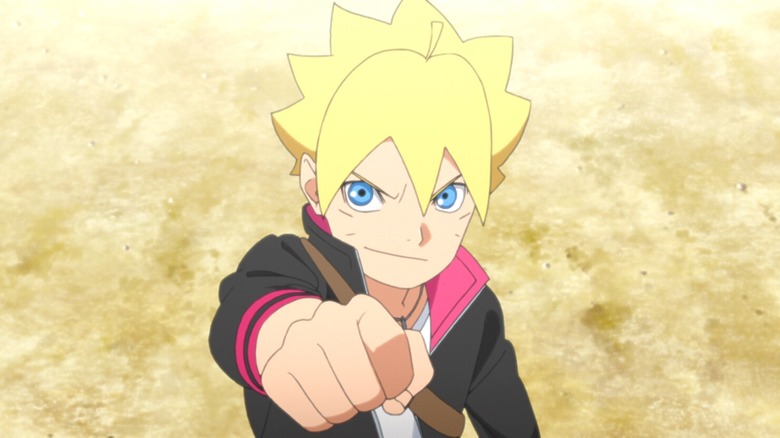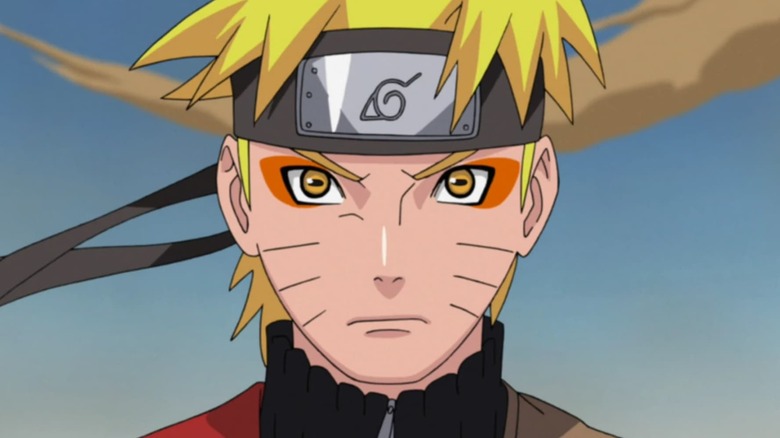Naruto's Creator Had One Condition To Make The Sequel Series Boruto
Fans of "Naruto" might've heard of illustrator Mikio Ikemoto due to his close association with the genre-defining shōnen manga, but Ikemoto has been a significant creative force for a long time. When "Naruto" creator Masashi Kishimoto was just starting out as a rookie manga-ka, Ikemoto had already amassed a cult-following for his one-shot manga debut, "Cosmos." Once Kishimoto began the serialization of "Naruto" for Shueisha, he deliberately sought out Ikemoto and recruited him in a chief assistant role that would span between 1999 and 2014. Ikemoto's contributions helped "Naruto" evolve into a polished serialized manga, as his responsibilities included drawing crowds/backgrounds, creating new character designs from scratch, and adding in half-tones. While Kishimoto undoubtedly honed "Naruto" into the beloved tale it is today, Ikemoto silently aided the creative process in ways that should not be overlooked.
Part II of the "Naruto" manga series was always meant to end on a note of hope. Our heroes, including the titular blonde troublemaker-turned-Hokage, participate in a climactic war and resolve longstanding grievances. The manga ends with the promise of a brighter future for the next generation of shinobi, who inadvertently carry the legacy of their parents and their complicated pasts. So when Kishimoto decided to work on a spin-off/sequel revolving around Naruto's son Boruto, he was adamant to bring Ikemoto along as a part of his core artistic team. This was essentially the only condition Kishimoto had before working on a "Naruto" sequel, which he explained in detail during an anime convention in France last year (via CBR).
For context, "Boruto" eventually began serialization in 2016 under a new writer (Ukyō Kodachi, who also penned episodes in the "Danganronpa 3" anime), with Kishimoto acting as editorial supervisor until Kodachi stepped down in 2020. The "Boruto" manga is still ongoing, having recently released Part II, titled "Boruto: Two Blue Vortex," which is yet to be adapted in the ongoing anime series. As Kishimoto and Ikemoto's drawing styles are pretty similar, the latter's art style in "Boruto" feels rather seamless, and any differences only serve to illustrate the sequel's distinctly lighter tone.
Kishimoto's statement proves that Ikemoto is integral to both Naruto and Boruto
"Naruto" might feel convoluted due to episodic arcs that can be considered filler, but these fluff/mixed-canon stories are integral to understanding the future it leads up to. During a 2024 anime event that spotlighted 2015's "Boruto: Naruto the Movie" and some of the best fight sequences from "Naruto," Kishimoto explained that he already had a blueprint for "Boruto" in mind (where the ethos of "Naruto" directly fed into this fresh story) before writing/drawing a single page. He emphasized the collaborative nature of the project, in which Ikemoto's contribution as the primary artist was non-negotiable from the get-go:
"Ikemoto-san creates a nemu [storyboards with dialogue at the draft stage] every month. With ideas, development, and characters that surpass my story draft [for 'Boruto']. So even though I check it every month, I hardly have anything to say. Ikemoto-san is someone I trust and who has helped me a long time in the production team for 'Naruto'. So I knew he was amazing in drawing as well as storytelling. I wouldn't have done 'Boruto' if Ikemoto-san hadn't agreed to take over."
This is an enthusiastic endorsement, one that can be traced all the way back to 2014, which was when "Naruto" had ended. Even then, Kishimoto had "no worries" about "Boruto" as a sequel story, as he had written out major story drafts and handed them over to Ikemoto. Any differences in approach were amicably discussed, cementing the fact that "Boruto" was always meant to be an Ikemoto-Kishimoto collaboration, with the former taking over the artistic reins of the franchise.
In the same interview, Ikemoto also shed light on the Boruto-Kawaki rivalry in the manga, explaining how Boruto is already a fleshed-out character (unlike his father, who had to constantly fight for personal growth). Here, Kawaki is the one who needs to develop as a complex deuteragonist, but he's completely different from Sasuke, who had served as Naruto's friend-turned-nemesis in the original series:
"Boruto, having become a young man, is a character who's fully evolved at once from the beginning. He is insightful and with great open-mindedness. Compared to Kawaki, the importance of what he carries on his shoulders is different. It will be more like Kawaki showing evolution as a character. Besides that, I think there are numerous contrasts between Naruto's scheme and that of Boruto's."
While you wait for the "Boruto" anime to adapt Part II, you can binge all 293 episodes in Part I — an endeavor that is well worth your time.

